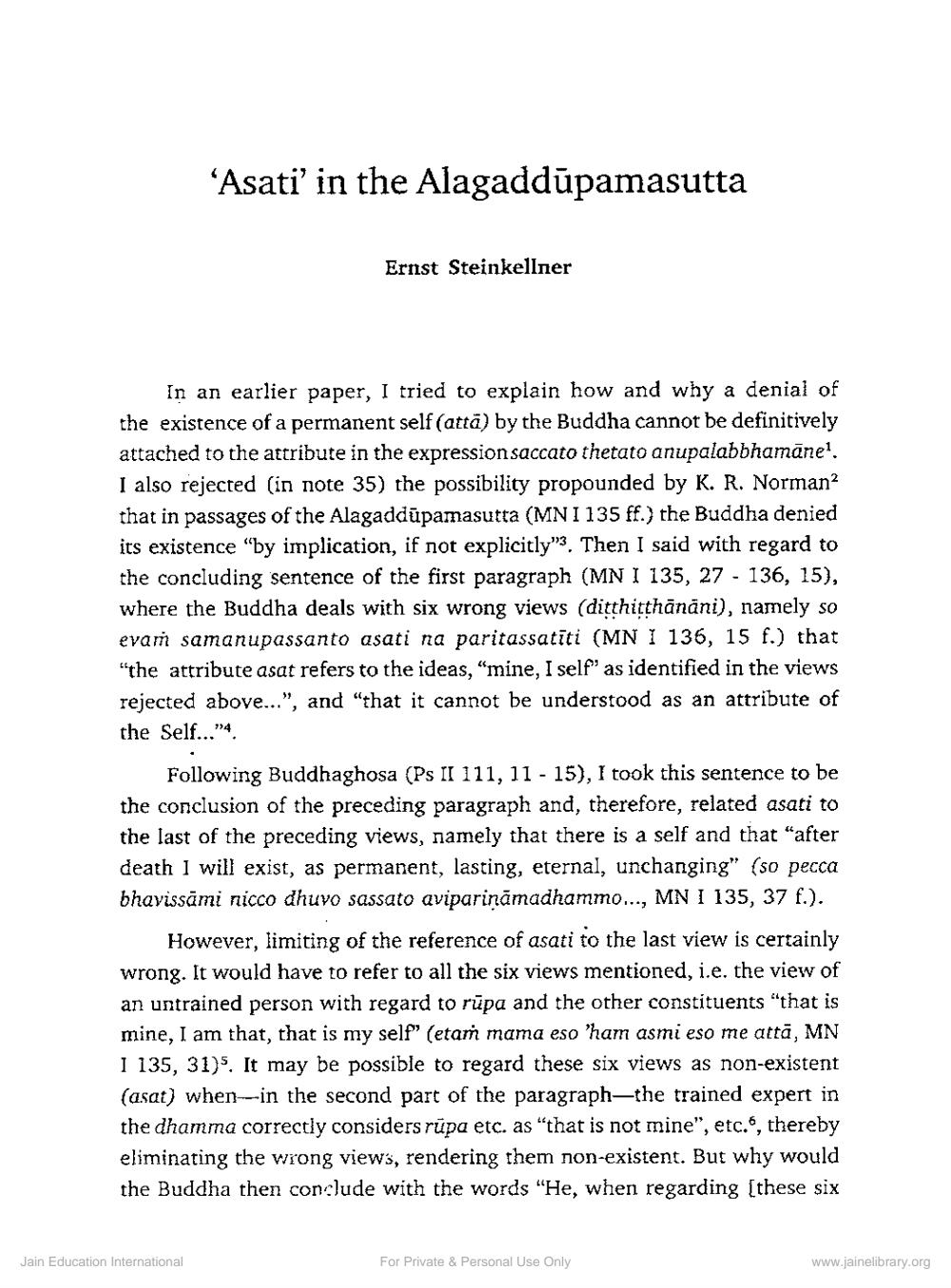Book Title: Asati in Alagadduopamasutta Author(s): Ernst Steinkellner Publisher: Z_Nirgranth_Aetihasik_Lekh_Samucchay_Part_1_002105.pdf and Nirgranth_Aetihasik_Lekh_Samucchay_Part_2 View full book textPage 1
________________ 'Asati' in the Alagaddūpamasutta Ernst Steinkellner In an earlier paper, I tried to explain how and why a denial of the existence of a permanent self (attä) by the Buddha cannot be definitively attached to the attribute in the expression saccato thetato anupalabbhamāne1. I also rejected (in note 35) the possibility propounded by K. R. Norman2 that in passages of the Alagaddupamasutta (MNI 135 ff.) the Buddha denied its existence "by implication, if not explicitly". Then I said with regard to the concluding sentence of the first paragraph (MN I 135, 27 - 136, 15), where the Buddha deals with six wrong views (ditthiṭṭhānāni), namely so evam samanupassanto asati na paritassatīti (MN I 136, 15 f.) that "the attribute asat refers to the ideas, "mine, I self" as identified in the views rejected above...", and "that it cannot be understood as an attribute of the Self..."4. Following Buddhaghosa (Ps II 111, 11-15), I took this sentence to be the conclusion of the preceding paragraph and, therefore, related asati to the last of the preceding views, namely that there is a self and that "after death I will exist, as permanent, lasting, eternal, unchanging" (so pecca bhavissāmi nicco dhuvo sassato avipariņāmadhammo..., MN I 135, 37 f.). Jain Education International However, limiting of the reference of asati to the last view is certainly wrong. It would have to refer to all the six views mentioned, i.e. the view of an untrained person with regard to rupa and the other constituents "that is mine, I am that, that is my self" (etam mama eso 'ham asmi eso me atta, MN I 135, 31). It may be possible to regard these six views as non-existent (asat) when in the second part of the paragraph-the trained expert in the dhamma correctly considers rūpa etc. as "that is not mine", etc., thereby eliminating the wrong views, rendering them non-existent. But why would the Buddha then conclude with the words "He, when regarding [these six For Private & Personal Use Only www.jainelibrary.orgPage Navigation
1 2 3 4
